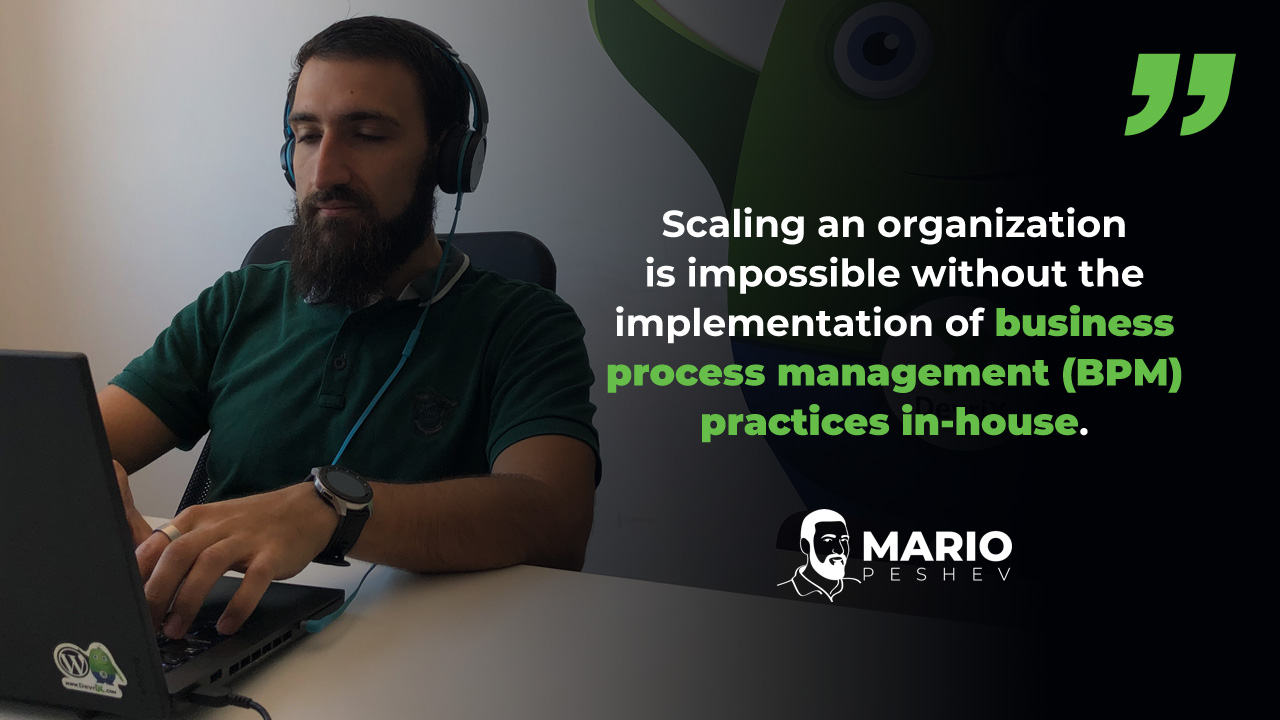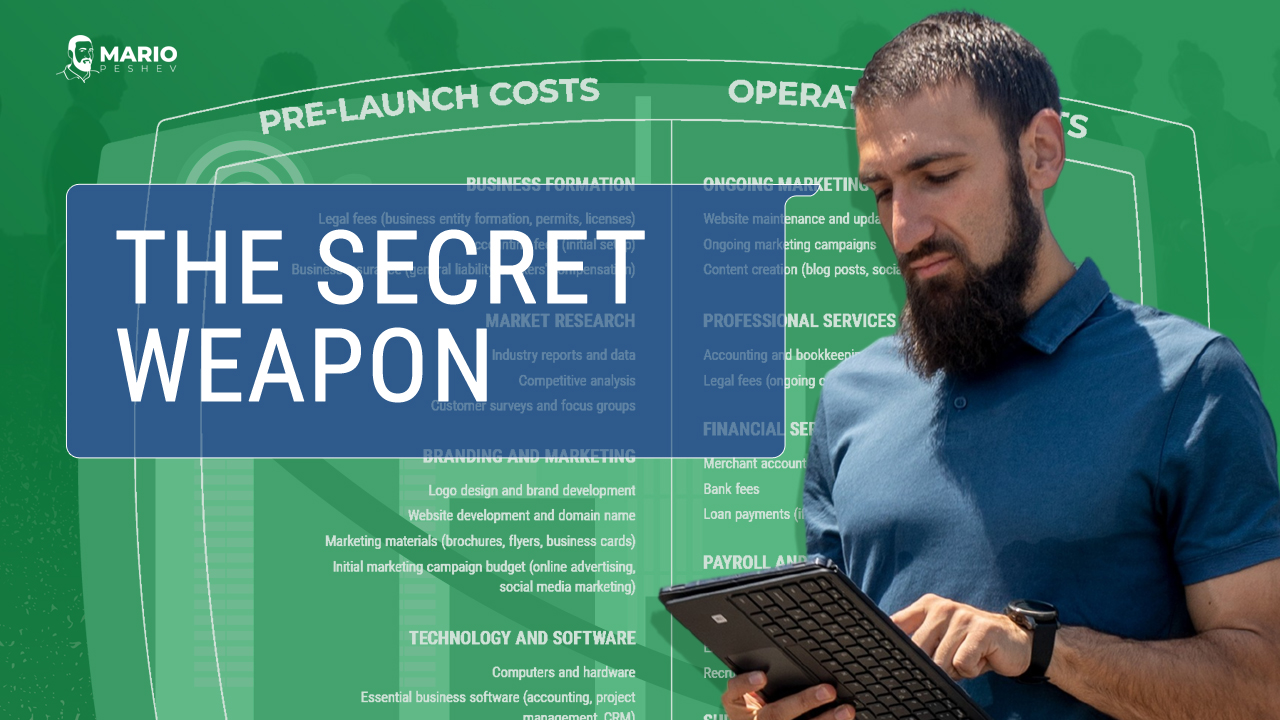If your company hasn’t grown to a fully-fledged corporation yet, you’re probably terrified (if not disgusted) from all the enterprise lingo – workflows, procedures, contingency plans, risk management (to name a few).
But scaling an organization is impossible without the implementation of business process management (BPM) practices in-house.
NASA tanked $327.6M through its Mars Climate Orbiter mission crashing the satellite in 1999 due to a software localization error. Some international horror stories such as Chernobyl could have been prevented with the right contingency plans in place. Let alone the COVID-19 spread we’re all victims of nowadays.
Case in point, business process management is not limited to large enterprise corporations. Small businesses and freelancers, medical startups, governments, and non-profits can all benefit from maintaining best practices within their own industry.

Let’s review why management protocols are integral to every organization – including yours.
What is Business Process Management?
As defined on Wikipedia:
Business process management (BPM) is a discipline in operations management in which people use various methods to discover, model, analyze, measure, improve, optimize, and automate business processes.
There are plenty of ongoing processes that nearly every business has to deal with:
- Hiring new talent (job descriptions, vetting applicants, scheduling interviews)
- Onboarding employees (first day or week, setting KPIs, office equipment, or access details)
- Issuing invoices (gathering customer data, preparing reports, creating a bookkeeping schedule, reminders for overdue payments)
- Vacation and sick leaves (paperwork, reassigning work, notifying other parties)
- Promotion (feedback reviews, salary increases, setting new KPIs, assigning new duties)
Growing businesses have to design the corresponding processes integral to their core service or product.
Site builders have checklists for launching a new site, setting up plugins or extensions, purchasing a hosting plan, or performing maintenance.
SEO experts rely on a set of steps to validate on-site and off-site opportunities, flaws in existing solutions, opportunities to grow traffic, and tools to analyze a web property and its competitors.
Content marketers rely on frameworks for building outlines, researching relevant pieces, compiling images (or designing such in Figma or Canva).
What it boils down to is expanding the standard process suite to other operational areas, documenting the corresponding processes, and applying them across the organization.

How Creating Processes Helps your Business
Designing processes serves multiple goals for a business:
- Repetition – following established and proven processes is easier (doesn’t occupy too much mental power).
- Reduced errors – the margin of error is lower when the process is tried and tested.
- In-depth execution – repetitive processes are more detailed and contain all the necessary steps. Running an operation solo means you’re probably missing out on fine details required to get the job done to the 100%.
- Delegation – a documented process is easier to assign and delegate to other team members.
- Optimization – following a process continuously uncovers new opportunities for optimization and automation.
- Automation – the implementation of tools and products to save time or gather essential information to get the job faster, every time.
- Transparency – combining processes with checklists or reports helps with accountability.
Learning how to design processes takes some time, but you’ve done it for your core solutions. The trick is to apply the same paradigms to recurring actions. Once you build the habit of doing this, your productivity will peak and you can focus on business development, recruitment, product planning – or whatever key task your expertise will benefit the most at the time.
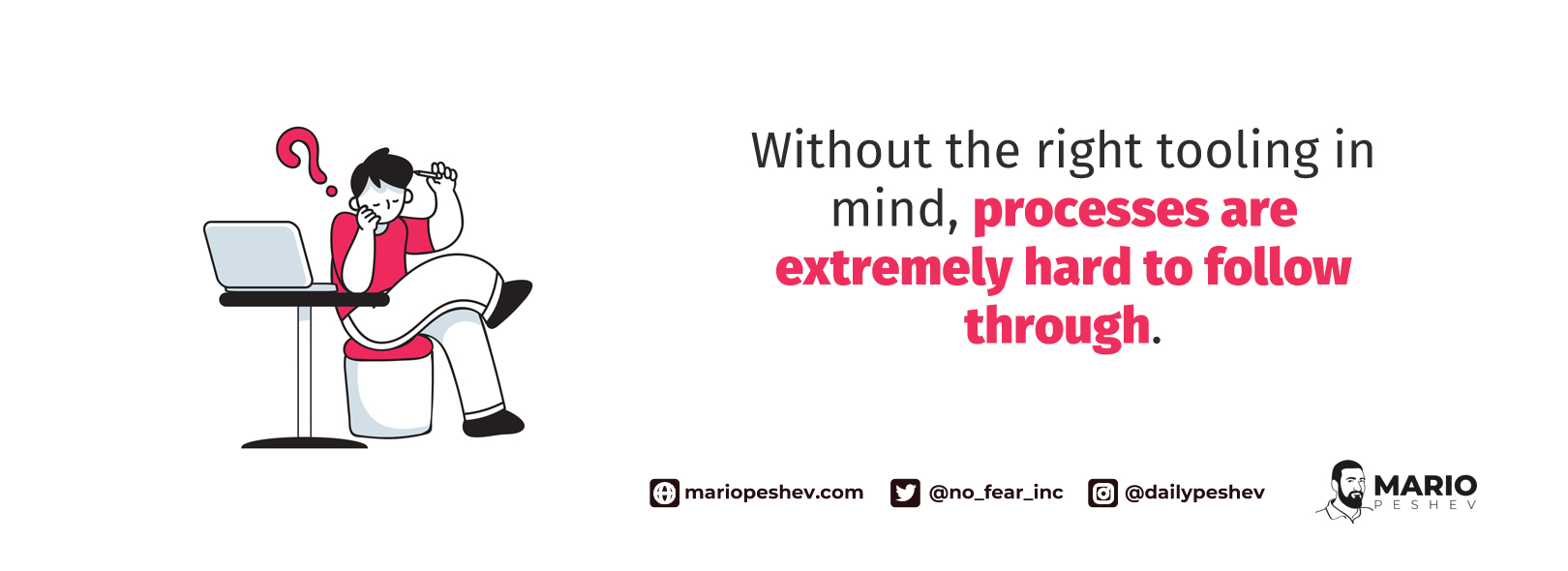
Taking BPM Seriously
Business process management can be integral to successfully scale an organization.
With a strong BPM foundation, much of the ‘nitty-gritty’ is already taken care of, freeing up mental space and resources for innovation.
Team members can work together more effectively when inefficient processes are not a hindrance.
Creative problem-solving and innovation thrive in this setting, adding another engine to your growth efforts.
As your team grows, multiple aspects of your management get impacted:
- Onboarding takes more time as you hire more people at a time (often in different capacities)
- Processes get more complicated – with new roles interfering for legal, accounting, compliance, editorial – you name it
- Retaining institutional knowledge without documentation and automation gets riskier and a lot more expensive
- A larger staff count results in more vacations, sick leaves, and resignations (as a total annual amount) – and covering for these should be possible for other team members
- Adaptive and adjustable processes are easier to apply across the board with a system that reflects changes immediately and team members can see the new steps right away
What about the cons?
There are three main drawbacks of integrating BPMS internally:
- It takes some time to get your processes organized – and ongoing time to manage them. Complexity varies depending on the tool you use.
- BPM is a broad category, which is why different market solutions solve different problems. I’ve seen project management systems classified as BPM, or automated mobile app builders as well, among others. It’s not trivial to find the right solution for your problems.
- Cost may be a factor. Some of the top players are not cheap, and combined with the time invested internally, it may result in a challenging process.
One of the best steps to simplifying your documentation and management process is relying on tooling to make your life easier.
Here’s what the BPM ecosystem looks like now.
What is Business Process Management Software?
To successfully design a new process, you need to go through a retrospection, documenting the key challenges you face in a given area, coming up with repetitive and clearly defined steps and resources, the parties involved in the process, and possible exceptions you may stumble upon along the way.
But without the right tooling in mind, processes are extremely hard to follow through.
That said, outside of the enterprise space, business process management is fairly chaotic. Small businesses resort to a myriad of tools to keep their work somewhat organized.
Some common patterns I observe both as an advisor and the CEO of an agency include:
- Google Docs – mostly documenting, but also referring to existing processes written down without applicable checklists or reminders in place.
- Project management systems – most PM systems try to incorporate a fraction of BPM within, although they don’t excel at it. You can create simplified workflows, but creating repeating tasks and assigning across teams isn’t always truly efficient. Also, we’ve found out that one-off and critical tasks within the same system always take precedence, thus other action items are left behind.
- Calendar – setting reminders for recurring activities (feedback reviews, issuing invoices, quarterly planning) is the standard, although meeting minutes, preparing the agenda, gathering actionable items, and delegation aren’t really documented well enough (even with the help of Docs).
- Airtable – organizing data from analytics tools, dashboards, social networks, or CRMs is great for reviews and planning, but there’s no repetition built-in nor the nudge to leverage the data properly (unless you have a full-time analyst capable of handling everything).
We built SaaS BPM as an alternative solution for SMBs and agencies eager to automate internal processes starting with their staff. The toolkit is simple and resembles job descriptions – it revolves around recurring activities (daily, weekly, or monthly) performed by team members in different roles.
It’s a lot more affordable than the enterprise market players and allows for HR to help with operations as well (starting at $29/mo). Different teams can deploy the BPMS themselves for internal operations only (or introducing 3rd party vendors or agencies externally). Lifestyle entrepreneurs can also run parallel businesses with clear and recurring tasks transparent for staff and management.
Regardless of whether you find a powerful solution that suits your needs or prefer to combine spreadsheets with a calendar together, let’s review several use cases we apply for my work for this website.

BPM: Activity Definition and Delegation
The first step is documenting the recurring activities we already perform and assigning them to the corresponding parties.
For instance, your team may be checking in first this in the day, then checking the support system, and sending a daily report. You normally create business activities assigned to all team members (or specific roles) in their respective capacities.
We do content and branding work for the advisory side of the business and some of the ongoing activities look like this:
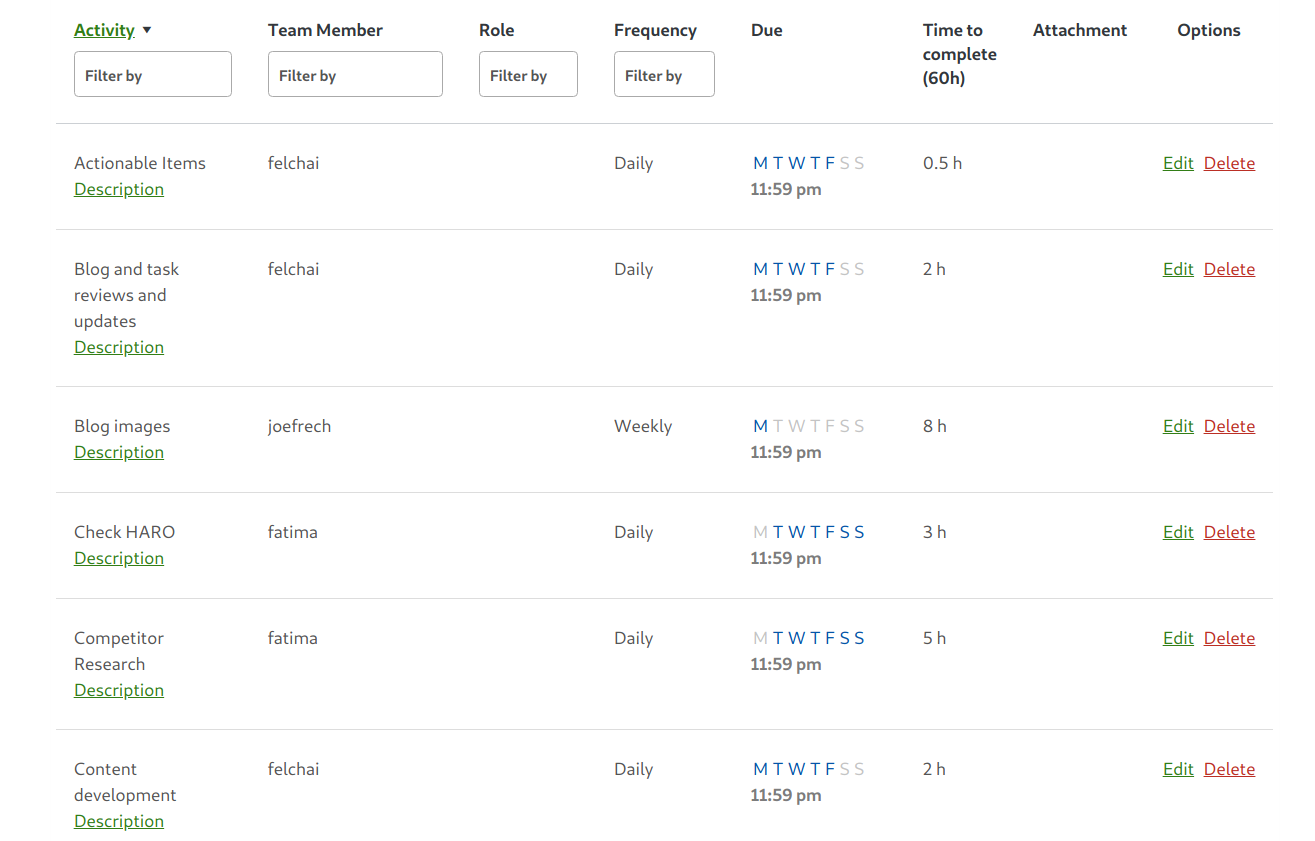
As seen in the fourth column, some activities are daily while others are weekly, and support roles may work odd hours (hence the use of an actual weekly schedule to adhere to).
Creating a new activity may be a short document to follow or a task in a project management system.
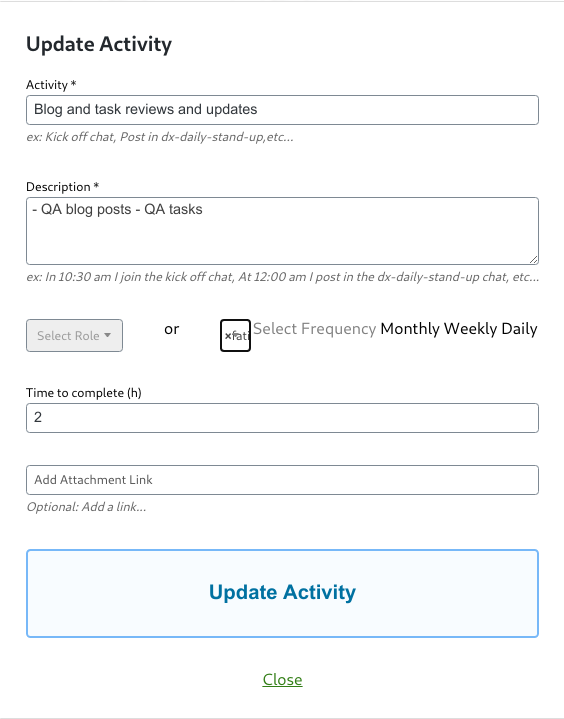
The common areas you may want to focus on are:
- Activity name – the common process you’re trying to automate
- Description – the details or a link to charts/docs for reference
- Assignee – an individual or a role (i.e. all of your support reps
- Frequency – how often should your staff follow the protocol
- Duration – now lots of processes take a varying amount of time but placing some ballparks really help with accountability across your team (and visibility)
We’ve found that some operational roles can be fully booked with recurring tasks and really effective as a result. Applying processes across the company enhances visibility and provides you with additional insights with regards to the delegation of resources.
This is why defining your departments and every role within the organization allows for a granular yet grouped set of activities that are easy to follow once you onboard a new team member:

And yet, a lot of existing processes you apply are not fully documented. Even if you break them down into the corresponding activities, it’s hard to keep everyone on the same page unless they report back to you.
Project management systems are task-oriented and task completion is an integral feature you would normally expect. This is why BPM software tools also rely on step-by-step workflows or checklists that improve the visibility and notify in case something goes south.
Consider a delayed backlog with uncompleted tasks that looks like this:
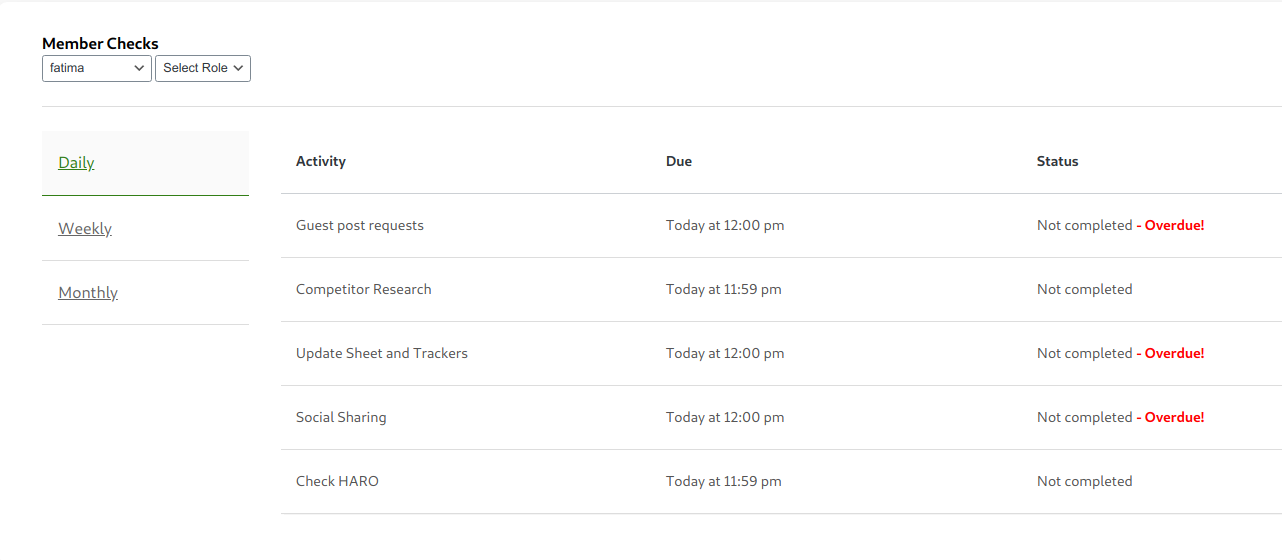
With the right notification management in place, you can receive daily reports for overdue tasks and assignments that haven’t been completed yet. This way, you can leverage additional resources or gather feedback for your next review.
Plus, it merely takes minutes a day to look up the status of your ongoing processes and escalate a problem as needed.

